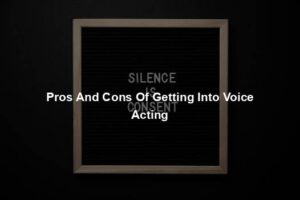
What Is The Impact Of Subtitling In The Society Among Us?
- Since the introduction of subtitles, it’s very clear and without a doubt that it brought about a change in how people relate to films. People have been able to engage easily with international foreign films that they wouldn’t before subtitles became a thing.
- Depending on what language the subtitles are one is able to watch a totally different language film and enjoy the whole content without getting confused or overwhelmed with the foreign language because of subtitles. While subtitles facilitate understanding, the work that goes behind subtitling is painstakingly long and precise.
- Subtitling is a form of audiovisual translation. Professionals with prior experience are the best when it comes to subtitles because the art of subtitling follows specific criteria, rules, and specifications.
- Professionally done subtitling requires the skills of linguistic specialists who are highly trained to understand the complex process of translating different types of program genres and content. They have the skill to keep the context and meaning of the original material within the subtitles they add.
How Are Subtitles Created?
- If you thought creating and production of subtitles is as simple as it sounds, then I suggest you think again and do your research well in order to get the right information. It’s way more and complex than directly translating a script and placing it on the lower part of the screen in a film. Subtitling is translation work that has time and space restrictions.
- Translators are always urged to have prior interaction with the materials they would work with, in order to have a basic understanding on the level of language used so as to be able to maintain the context and meaning of the original video, as they convey the translated script into the target languages. It not only deals with script translation alone. One has to in-cooperate the audio and video.
- Special parameters also have to be considered, during translation using subtitles. at times a single line translated as a single subtitle might exceed the expected parameters which become a huge problem during layering of the subtitles in line with the audio. This simply means that the translator has to consider the positioning and timing, the limits of the characters-per-line, as well as the reading speed.
What Are The Limitations And Constraints Of Subtitles?
- Most of the time, the space allocated for the translation is always limited to two lines of subtitles. which the standard space across all boards.
- Usually, the subtitles are positioned and centered at the bottom of the visible screen. In a video, the maximum number of characters that can fit is 70 characters. This means each line can only accommodate 35 characters inclusive of symbols and spaces.
- Subtitles also have time limits. Subtitles have a minimum length of one second. The maximum duration subtitles seen on screen is six seconds. However, though these parameters are standard, they can always be changed to meet a requirement, that a film might have.
- While there is a minimum and maximum limit to the number of characters and the subtitle’s duration, there is also a direct relation between them. This means that there are exceptions, based on the subtitle and how well (and quickly) it can be read.
- Reading Speed of the Viewer is Important. If you watch films with subtitles you are aware that certain reading speed is expected in order for one to get a clear understanding of what is being said on the subtitles. This means that the average reading speed of an individual is what determines the actual number of characters in the subtitle and its duration remaining on screen. People are different and so is their reading and comprehension speed so a subtitle which is 6 seconds might take some people less time than others. This put into consideration, the average speed is usually an estimate. Basically, three words per second is the average estimated reading speed. The average viewer needs about four seconds to read two lines of subtitles containing 70 characters or approximately 12 words. When the time is short, minimal characters should be used.
- In order for a subtitle to be perfectly synchronized with a video’s audio, it’s usually advisable for a translator to try and calculate the time in which a subtitle appears and disappears from a screen in a process called spotting. This does help at times but at times it inaccurate because of how fast seconds move past.
- Something else that needs consideration is the changes in the camera shot which also usually affects the duration of the subtitles. When there is a change of shot, the viewer is inclined to re-read the subtitle. So scene and shot changes are added to the rest of the factors a translator has to look out for.
Facts About Subtitling.
- You might ask whether subtitling is cost-effective or it’s expensive, the reality is compared to most of the other audiovisual translation methods, subtitling is the most cost-effective. As a result, most film companies tend to embrace it more than all the other forms of audiovisual translation.
- In recent years, many TV dramas from other countries became more accessible because they were subtitled. In recent years a lot of streaming sites have come which create subtitled films targeting online international audiences.
- For commercial purposes, professional translators are hired to produce subtitles for films so as to ensure high quality and accurate translation of their content, so that they can be to be distributed to a number of global audiences.
- For subtitled films to be commercialized a lot of heads have to come together to ensure that that actually happens and these heads are those of the scriptwriter, director, artists, editors, cinematographers, costume designers, set designers, musical directors, makeup artists, production crew, and more. But while it has been around for ages, one of the collaborators that are not often given much attention is the subtitling team.
Is Subtitling an Art?
Subtitling is and can always be considered an art because it really is an art. All the processes that are involved in making sure that films are subtitled and synchronized with the video’s audio is not a child’s play. There are several challenges that translators face while producing subtitles and thus making it a creative process that helps films to reach out to a wider audience.
When filmmakers re-film a particular story that was originally filmed in another language, their work is admittedly made easy by the assistance of subtitles which make them understand movies from different parts of the globe. As an expressive type of art, it’s only right that it received, understood and enjoyed by many kinds of audiences and able to express the culture and story from one part of the world to the other.
What Are Some Challenges You Will Definitely Face During The Process Of Subtitling?
To further show how difficult the art of subtitling is, I’ll be able to mention two main factors that are essential in the process of subtitling that you have never thought of before.
- Expression of Emotion
- Do you know how hard it is to express emotions in writing? Yes, just think of how hard it becomes for you to show anger in a text without emoji’s but subtitlers have to do exactly that and show that whatever the subtitle shows are exactly in line with what is being shown and heard from a film. The words being used must always be perfectly handpicked by the translator and the editor because without making careful choices of words to use the audience might find a hard time grasping the concept of a scene.
- Difficult words to translate.
- Someone who is a translator can tell you without a doubt how hard it is to translate certain words and expressions from one language to another. This comes to be because of the fact that one word might mean a certain thing in one language and another thing in another language. Most times cultural jokes, idioms, poems are not able to be translated well which most times lead to a film losing context and the original meaning.
- Some words where translators have difficulty translating into other languages include mind-boggling, flabbergasted, glisten, gleam, glare, rustle, logic, insight, impeach, bully, vicarious, etc. Of course, it goes both ways. The Portuguese word “jarrete” is “back of the knees” in English, while “tez” is “face skin.”
- Another thing is that some words in one language might be a single word and when translated they turn to be two or three words which brings a problem with synching. Some single English words may need more words when translated. For example, “shallow” (water) in English will be “peu profond” in French. There are English words that need a lengthy description instead of a direct translation.
- With all that said, we should all be able to agree and understand that subtitle really is an art which must be taken as so and highly appreciated.
- Someone who is a translator can tell you without a doubt how hard it is to translate certain words and expressions from one language to another. This comes to be because of the fact that one word might mean a certain thing in one language and another thing in another language. Most times cultural jokes, idioms, poems are not able to be translated well which most times lead to a film losing context and the original meaning.
Complete article on [Challenges Faced During Subtitling…]







